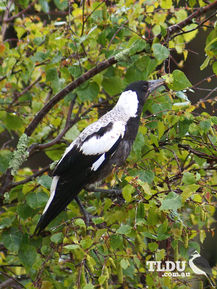
Shoppers Feedback:
Jan 17, 2017
Hello Ros,
I have now paid the invoice, but I would like to write to you just to say a big THANK YOU for getting me the Penguin!
The ChatterMate Penguin became a nice memory for me when I was in New Zealand, and I am so greatful to you for arranging so that I could have it! :-)
Thank you so much!!!!!!!!!!!
Regards,
Malin
Hi Ros,
Many thanks for your very kind email. I really appreciate your prompt reply!
I appreciate your advice regarding the decorations and customs. These are a gift for my daughter’s exchange student family so when she returns home on the weekend I will show her and see if she loves them as much as I do!
Thanks so very much again - I am truly grateful for your kind assistance.
Kind Regards
Bernadette
Ros,
Thanks again for the great customer service. It's a refreshing change!
Best regards,
Trevor
Hey Roz,
Thank you for your emails. Just loved my first order. The cute little Aussie bush critters are going to be used for an office Christmas decoration. My colleagues also liked them and talked about making an order to your site. I'll send you a photo when completed.
I'll be ordering more to send to my daughter's host family in America.
Fabulous service from you.
Kind regards,
Michelle
Thankyou. Order arrived today. One very happy grandson with his new beastly binoculars.
Regards,
Irene
- Home
- Wild Wonders
- Shop
- Aromas of Australia
- Australian Made
- Books
- Book Marks
- Christmas Decoration Sale
- Christmas Decorations
- Clocks
- Drink Holders
- Garden & Outdoor
- Gift Wrapping & Cards
- Home & Giftware
- Jewellery
- Keyrings
- New Products
- Pencils & Pen Holders
- Photo Frames
- Plush Toys
- Plush with Sound
- Sheepskin Rugs
- Stationery
- Stone Carvings
- Toys & Games
- Travel Goods
- Wedding
- Wild Figurines
- Wildlife Safety Products
- Wind Chimes
- Wine Charms
- View All Products
- Wildlife
- Australiana
- Explore
- Contact Us
Australian Magpie

Quick Facts
| Length: | - |
| Height: | - |
| Weight: | - |
| Colour: | Black and white |
| Habitat: | Anywhere there is a combination of trees and open areas |
| Food: | Insects and their larvae. They will often take handouts from people |
| Predators: | - |
| Status: | - |
The Australian Magpie is black and white, but the plumage pattern varies across its range. Its nape, upper tail and shoulder are white in males, grey in females. Across most of Australia, the remainder of the body is black. In the south-east, centre, extreme south-west and Tasmania, the back and rump are entirely white. The eye of adult birds is chestnut brown.
The Pied Butcherbird, can be distinguished from the Australian Magpie by its black head and bib separated from the black back by a complete white collar, and white underparts. It is also a smaller species. The Australian Magpie is larger and has a heavier bill than the similarly coloured Magpie-lark.
Australian Magpies are common and conspicuous birds. Groups of up to 24 birds live year round in territories that are actively defended by all group members. The group depends on this territory for its feeding, roosting and nesting requirements.
Australian Magpies are found wherever there is a combination of trees and adjacent open areas, including parks and playing fields. They are absent only from the densest forests and arid deserts
The Australian Magpie walks along the ground searching for insects and their larvae. Birds will also take handouts from humans and will often venture into open houses to beg for food.
The Australian Magpie has one of the world's most complex bird songs.
Although the Australian Magpie is generally quite tame, during the breeding season some individuals become aggressive towards any intruders, including humans, which venture too close to their nest sites. The nest is a platform of sticks and twigs (occasionally wire), with a small interior bowl lined with grass and hair. The nest is constructed in the outer branches of a tree, up to 15 m above the ground.
Last Updated: Sunday 16th February, 2014
BirdLife Australia - www.birdlife.org.au
BUSH e-TELEGRAPH
Signup for our monthly newsletter the "e-Telegraph"
Quick Links
Home | The Beginning | About The Land Down Under | Wild Wonders | Advertise on Wild Wonders | Christmas Decoration Sale | Christmas Tree Decorations | Drink Holders | Plush with Sound | Stone Carvings | Wildlife Wine Charms | Freebies | Australian Wildlife | Help Our Wildlife | Australiana | Photo of the Month | Explore The Land Down Under | Contact Us | Legal Notices


